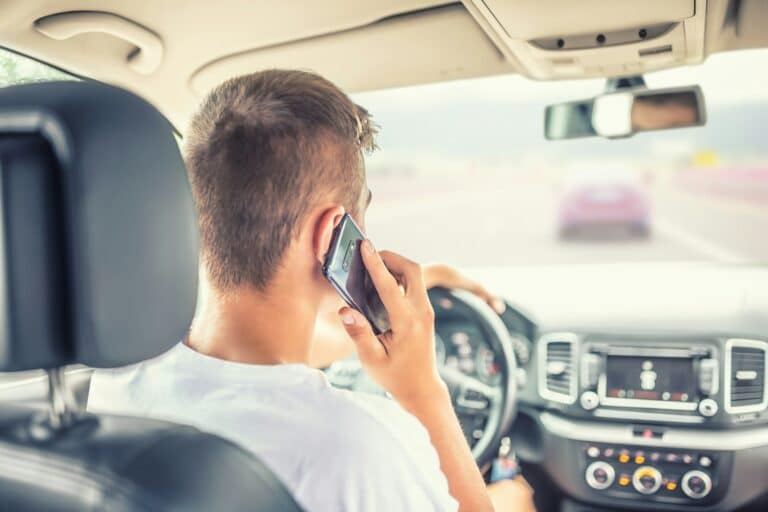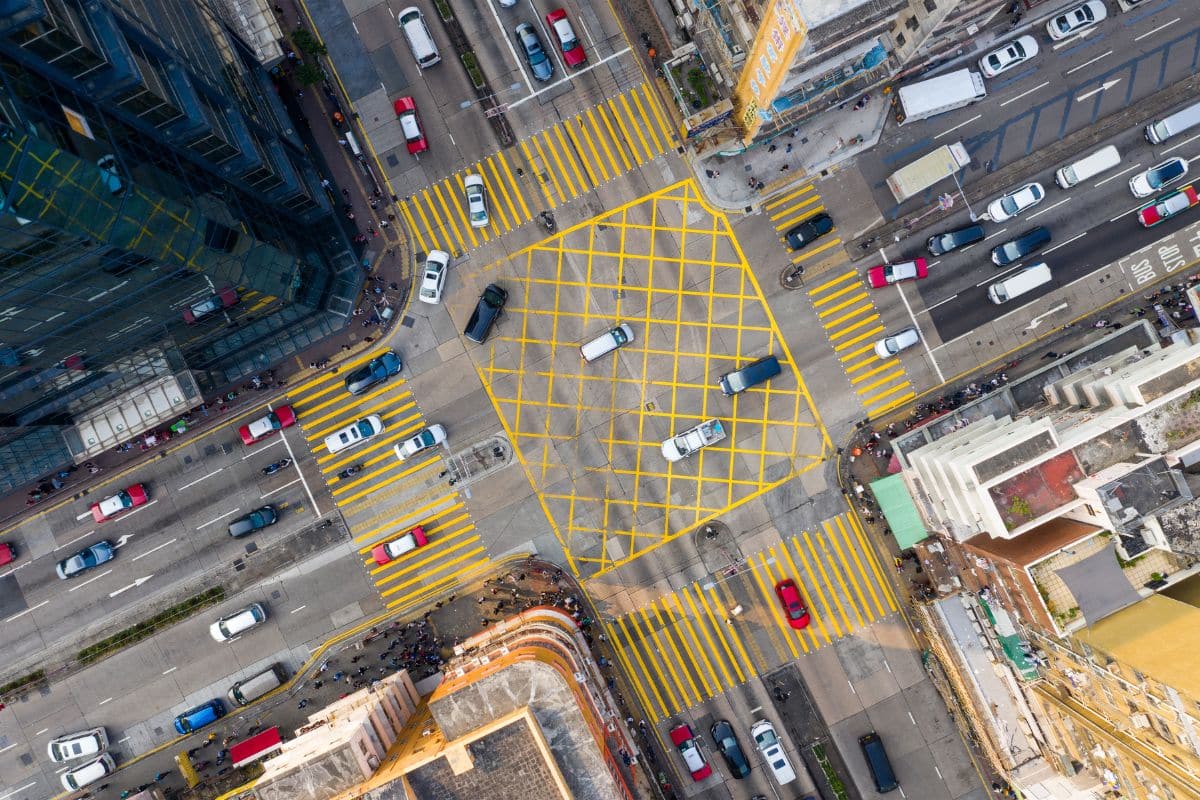Distracted driving is a growing issue that has severe consequences on our roads today. Every year, thousands of lives are lost, and millions of injuries occur due to this preventable behavior.
Understanding how common distracted driving accidents are is crucial for public safety and for taking the necessary steps to reduce these incidents.
This article will explore the prevalence of distracted driving accidents, the factors that contribute to them, and their impact on road safety and public health.
Factoid About Distracted Driving in the US
| Statistic | Number/Percentage | Description |
|---|---|---|
| Total Number of Fatalities (2022) | 3,308 | People killed in crashes involving distracted drivers. |
| Total Number of Injuries (2022) | 2.38 million | People injured in crashes involving distracted drivers. |
| Percentage of Fatal Crashes Involving Distracted Driving | 8% | Represents the proportion of all fatal crashes attributed to distracted driving. |
| Percentage of Distraction-Related Crashes Involving Cellphone Use | 14% | Portion of distraction-related crashes where cellphone use was a factor. |
| Average Time Eyes Off the Road While Texting | 5 seconds | Time during which a driver texting at 55 mph covers the length of a football field. |
| Percentage Increase in Crash Risk When Texting | 23x | Drivers are 23 times more likely to crash when texting. |
| States with Handheld Cellphone Bans | 25 | States that prohibit all drivers from using handheld phones while driving. |
| Annual Economic Impact of Distracted Driving | $40 billion | Estimated cost of crashes related to distracted driving each year. |
Definition of Distracted Driving
Distracted driving refers to any activity that diverts attention from driving. This can include actions such as texting, talking on the phone, eating, or even adjusting the car’s controls.
The main problem with distracted driving is that it takes your focus away from the road, increasing the risk of accidents.
When you’re not fully focused on driving, your reaction time slows down, making it harder to avoid potential hazards.
Importance of Understanding the Prevalence of These Accidents
Understanding the prevalence of distracted driving accidents is vital for improving road safety.
With distracted driving accounting for about 8% of all fatal crashes in the U.S., it’s clear that this issue needs to be addressed.
Knowing how common these accidents are helps in formulating better laws, policies, and public awareness campaigns to reduce them.
For example, in busy urban areas like Moreno Valley, the risk of encountering a distracted driver is higher, making it even more critical for drivers to remain vigilant and focused.
Impact on Public Safety and Road Conditions
The impact of distracted driving on public safety and road conditions is profound.
When a driver is distracted, they are more likely to cause accidents that can lead to severe injuries or fatalities.
These accidents not only harm the individuals involved but also create hazardous conditions for other road users, including pedestrians and cyclists.
Additionally, distracted driving can lead to increased traffic congestion and higher insurance premiums for everyone.
By staying focused and avoiding distractions, drivers can help reduce these risks and contribute to safer roads for all.
Cellphone Use and Its Impact on Accident Rates
Cellphone use while driving is one of the most common and dangerous forms of distracted driving. The increasing reliance on smartphones has made it all too easy for drivers to divert their attention away from the road.
Differences in Risk Between Texting vs. Calling
Texting while driving is considered far more dangerous than simply talking on the phone. When a driver texts, they take their eyes off the road for an average of five seconds.
At highway speeds, that’s enough time to travel the length of an entire football field without looking at the road.
On the other hand, talking on the phone, even with a hands-free device, can still pose significant risks because it distracts the driver mentally.
Studies have shown that texting while driving increases the risk of a crash by 23 times compared to driving without distractions, while talking on the phone, though less risky than texting, still increases the likelihood of an accident.
The Role of Hands-Free Devices in Accident Prevention
Hands-free devices were introduced as a safer alternative to holding a phone while driving, but their effectiveness in reducing accidents is still up for debate.
While hands-free devices eliminate the need for drivers to take their hands off the wheel, they do not eliminate cognitive distractions.
A driver’s mind can still be focused on the conversation rather than the road, which can delay reaction times and lead to accidents.
Some studies suggest that the use of hands-free devices is only marginally safer than holding a phone, emphasizing the need for drivers to minimize all distractions, not just manual ones.
Legal Repercussions for Cellphone Use While Driving
Using a cellphone while driving can result in serious legal consequences. Here’s a quick look at what you might face:
- Fines ranging from $100 to $500 for a first offense.
- Points on Your License, which leads to higher insurance premiums or license suspension.
- Increased Insurance Premiums (can go up by 20% or more)
- Potential Criminal Charges
Understanding these repercussions can help drivers make safer choices on the road.
Contributing Factors to Distracted Driving Accidents
Distracted driving accidents are not just caused by cellphone use — there are multiple factors that can divert a driver’s attention from the road. Understanding these factors is crucial in addressing the root causes of distracted driving and finding ways to mitigate them.
Three Main Types of Distractions
Distracted driving is a significant contributor to road accidents, often leading to severe outcomes. To better understand how distractions impact driving, it’s important to categorize them.
Below are the three main types of distractions that drivers commonly face:
- Visual Distractions (taking your eyes off the road)
- Manual Distractions (taking your hands off the steering wheel)
- Cognitive Distractions (taking your mind off driving)
Recognizing these types of distractions can help drivers stay more focused and reduce the risk of accidents.
The Role of Multitasking in Increasing Accident Risk
Many drivers believe they can multitask while driving, but studies show that this is a dangerous misconception.
The human brain is not designed to handle multiple complex tasks at once, and when drivers try to do so, their reaction times slow significantly.
For example, a driver who is texting and driving might take longer to notice a red light or a pedestrian crossing the street. This delay can mean the difference between avoiding an accident and causing one.
Multitasking while driving doesn’t just increase the risk of accidents—it makes them almost inevitable.
Impact of In-Car Technologies on Driver Attention
Modern vehicles come equipped with a range of technologies designed to make driving easier and more enjoyable, such as GPS systems, infotainment centers, and voice-activated controls. However, these technologies can also be a source of distraction.
Even something as simple as adjusting the GPS or changing the music can take a driver’s attention away from the road.
While these features are intended to enhance the driving experience, they can also lead to dangerous distractions if not used responsibly.
Influence of Passenger Interactions on Driver Focus
Interactions with passengers can also contribute to distracted driving.
Whether it’s engaging in a lively conversation, responding to a passenger’s request, or simply attending to a child in the backseat, these interactions can take a driver’s focus off the road. This is particularly risky for young or inexperienced drivers, who may already struggle with maintaining focus.
Even a momentary lapse in attention caused by a passenger can result in a serious accident.
Regulatory Measures and Their Effectiveness
As distracted driving becomes a growing concern on U.S. roads, both federal and state governments have implemented various regulatory measures to combat the issue. These laws and regulations aim to reduce the number of accidents caused by distractions and improve overall road safety.
Overview of Federal and State Laws Targeting Distracted Driving
In the United States, distracted driving laws vary from state to state, but many have implemented strict regulations to curb this dangerous behavior.
Federally, the National Highway Traffic Safety Administration (NHTSA) plays a crucial role in promoting public awareness and providing guidance on distracted driving laws.
While there is no national law that bans texting or cellphone use for all drivers, individual states have taken the lead in this area.
For instance, 48 states, along with Washington D.C., Puerto Rico, Guam, and the U.S. Virgin Islands, have implemented laws banning texting while driving.
Moreover, 25 states prohibit all drivers from using handheld phones while driving, ensuring that drivers keep their hands on the wheel and their eyes on the road.
Impact of Cellphone Bans on Accident Rates
The introduction of cellphone bans has had a measurable impact on reducing distracted driving accidents.
States that enforce strict handheld phone bans have seen a decrease in the number of crashes related to cellphone use.
For example, studies have shown that states with all-driver bans on cellphone use have experienced a significant reduction in rear-end collisions, which are commonly caused by distracted driving.
These laws have not only reduced the number of accidents but have also heightened awareness about the dangers of using phones while driving.
Effectiveness of Public Awareness Campaigns
Public awareness campaigns are another vital tool in the fight against distracted driving.
Campaigns like NHTSA’s “Put It Down: One Text or Call Could Wreck It All” have been instrumental in educating the public about the risks associated with distracted driving. These campaigns utilize a mix of traditional media, social media, and community outreach to reach a broad audience.
The effectiveness of these campaigns is evident in the growing public awareness and changing attitudes towards distracted driving.
More drivers are now aware of the dangers and are taking steps to avoid distractions while behind the wheel.
Analysis of Enforcement Measures Across States
The enforcement of distracted driving laws is critical to their effectiveness. However, enforcement varies widely across states, which can impact how well these laws work.
In states with primary enforcement laws, officers can pull over drivers solely for using a handheld device, leading to more citations and, consequently, a greater deterrent effect.
In contrast, states with secondary enforcement laws, where officers can only issue a citation for distracted driving if the driver is pulled over for another offense, tend to see less impact from these regulations.
This difference highlights the importance of strong enforcement in ensuring that distracted driving laws achieve their intended outcomes.
Take Action Against Distracted Driving Today
If you or someone you know has been affected by a distracted driving accident, don’t wait to seek help.
Crockett Law Group, your trusted Santa Ana car accident attorney, is committed to fighting for your rights and securing the compensation you deserve.
Call us at (800) 900-9393 for a free consultation and let us help you through this challenging time.










